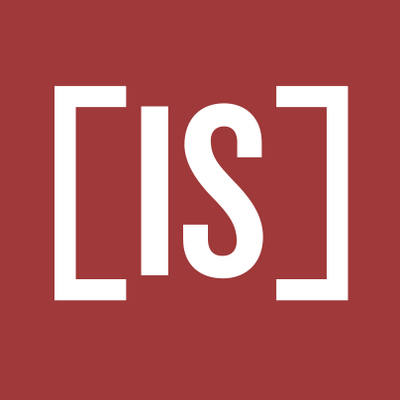The American Jobs Plan and the American Families Plan propose to address racial inequities through significant infrastructure, workforce, education, and child care investments. These kinds of targeted investments could address historic discriminatory practices and disinvestment in communities. Successfully implementing these plans to achieve equitable outcomes, however, may depend on purposeful steps around long-standing policies and procedures that have led to differences in access to opportunity and resources.
The American Jobs Plan identifies multiple types of historically underserved organizations or communities where these investments will be targeted. For instance, 15 decarbonized hydrogen demonstration projects are proposed to be sited in distressed communities. A Community Revitalization Fund is proposed to close gaps in access to the innovation economy for disinvested communities of color and rural communities. Half of the $40 billion proposed for upgrading research infrastructure will be reserved for historically Black Colleges and Universities (HBCUs) and other Minority Serving Institutions (MSIs).
Similarly, the American Families Plan aims to close equity gaps with investments directed at making college more affordable for low- and middle-income families, including students at HBCUs and other MSIs. Additional investments aim to strengthen completion and retention rates at colleges serving students from disadvantaged communities.
Identifying target groups is necessary, but may not be sufficient. Multiple barriers may need to be addressed for the funds to reach their intended destination. Unfortunately, the process of applying for and receiving federal funds is much more difficult for underserved communities than for others. Many infrastructure projects require a benefit-cost analysis, which has a built-in bias toward larger population centers and higher-income communities because a willingness to pay for a benefit is based on income. Other projects may require a risk analysis, which has a built-in bias toward wealthy communities because damages are captured as direct economic asset losses—the monetary value of damage to physical assets. As a consequence, benefit-cost, and risks analyses tend not to support investments in small or poor communities.
Additionally, applicants for federal funds are often required to provide non-federal sources of funding (e.g., cash, in-kind services, materials), which is hard for small, impoverished communities to find. Even if these barriers were somehow addressed, applicants would still need significant technical skills to navigate the application process successfully.
Recent history vividly demonstrates the uneven playing field. As the COVID-19 virus spread across the United States, lawmakers quickly enacted a relief package that would help struggling small businesses continue to pay employees’ salaries during the pandemic. While this relief package allocated $349 billion in forgivable loans to small businesses, these funds were exhausted in less than two weeks. Instead of helping “the nation’s smallest, mom-and-pop shops,” more than $243.4 million was awardedto publicly traded companies and several large companies with legal and financial problems received these funds. The first come, first serve structure of the package allowed well-resourced businesses to take advantage of funds meant to help small businesses.
Another example is that while it is necessary to invest in HBCUs and MSIs, these institutions differ greatly by enrollment and endowments. Distribution processes could be expanded to consider the strengths and weaknesses of investments in each institution and to develop methods that maximize the fit between the support provided and the gaps being addressed.
While targeted investments may be necessary to redress historic inequities that exist by race and gender, a thoughtful process could be established to ensure that funds are distributed in a fair manner. For example, establishing a time window to accept applications could be more fair than a first-come, first-serve process. In some cases, community capacity to apply for and successfully manage federal funds may need to be bolstered. The methods used for assessing risk and vulnerability and determining cost-benefit tradeoffs may need to be updated so that small or poor communities are no longer overlooked.
Addressing social inequities may require attention not only to how the funds are distributed, but also what the funds are used for. Differential resilience across groups or places relates to both physical or built infrastructure (reliable and safe electricity, transport, schools, etc.) as well as social infrastructure (e.g., government functions, educational programs, social support networks). Interdependent physical and social systems offer enormous benefits for daily life because they produce and distribute essential goods and services necessary for health, safety, and economic wellbeing.
The impact of interlinked physical and social systems is apparent in population health disparities related to COVID-19 outcomes. Overcrowded housing was linked to the rapid spread of COVID-19, the elderly and most vulnerable in society were at an even higher risk of infection and illness due to their reliance on care and communal living, and rates of hospitalizations and deaths are worse for minorities. Similarly, adequacy of housing, as well as proximity to natural environments (e.g., green infrastructure which can provide cooling or help to manage stormwater runoff), has been shown to mitigate the most severe health consequences from climate hazards such as extreme heat and flooding. Recognizing this interdependence could be key to overcoming the false dichotomy between environment and economy or physical versus social infrastructure.
The plans proposed by the Biden administration suggest that policymakers could make addressing equity issues foundational to their work. Policymakers might also recognize that the inequities have been decades in the making, the outcomes of historical decisions that shape where people settle, the livelihoods they engage in, and the resources that they can access. Using the tools that contributed to inequities may not result in a different outcome. Instead, new strategies might lead to equitable outcomes as the United States debates how and where to invest as it recovers from the devastating impacts of the COVID-19 pandemic.


